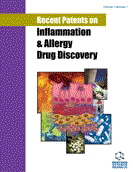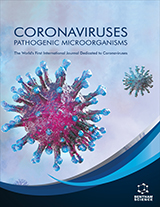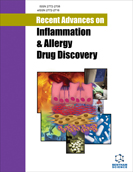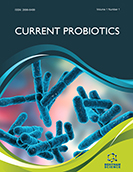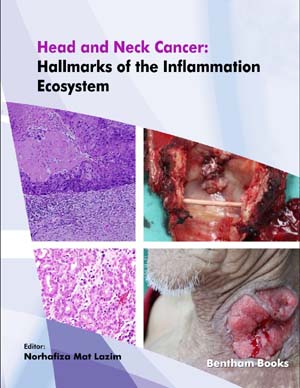Abstract
Background: HIV positive patients can suffer many complications due to infectious diseases. A sever drug reaction to some of the drugs involved in the treatment can overlap the symptoms of the infections, making the diagnosis very difficult. We present the case of a 28-year-old-man, HIV positive, with secondary syphilis, who developed a Stevens Johnson Syndrome (SJS) caused by one of the many drugs he received. The SJS was overlapped with a possible Jarisch Herxheimer Reaction, which complicated the diagnosis of the skin reaction.
Objective: In HIV+ patients, the overlapping of severe drug reactions and infectious diseases could be fatal, thus an accurate diagnosis is mandatory.
Material and Methods: A Rapid Plasma Reagin Test (RPR), an ELISA test, a blood laboratory test, chest radiography and a skin biopsy were realized in order to diagnose the infectious disease and the cause of skin lesions. Intradermal tests and double blind challenge tests were realized in the allergy study.
Results: The laboratory tests confirmed the diagnosis of syphilis; the skin biopsy confirmed the cause of lesions, a severe allergic reaction as a SJS. The allergy study discharged all the drugs involved, except dypirone which wasn't proved in the study because of the severity of reaction, the high possibility to be the causative drug and the alternative of other similar drugs available. For the inflammatory response, HIV+ patients are especially susceptible to severe reaction, both infectious and allergic, as in this case. Thus, recent patents emphasize the interest in inflammatory molecules that cause inflammatory symptoms.
Conclusions: Although the diagnose of SJS has established criteria, the possibility of overlapping with infectious illness and/or with its treatment, may complicate the diagnosis.
Keywords: Drug allergy, HIV, Jarisch Herxheimer reaction, Steven Johnson Syndrome, syphilis.
Recent Patents on Inflammation & Allergy Drug Discovery
Title:Stevens Johnson Syndrome versus Jarisch Herxheimer Reaction in an HIV Positive Patient with Secondary Syphilis
Volume: 11 Issue: 2
Author(s): Sarah Micozzi*, Patricia Rojas Perez-Ezquerra, Cristina Morales-Cabeza, Cristina Diez and Manuel De Barrio
Affiliation:
- Allergy Department of University General Hospital Gregorio Maranon, Madrid,Spain
Keywords: Drug allergy, HIV, Jarisch Herxheimer reaction, Steven Johnson Syndrome, syphilis.
Abstract: Background: HIV positive patients can suffer many complications due to infectious diseases. A sever drug reaction to some of the drugs involved in the treatment can overlap the symptoms of the infections, making the diagnosis very difficult. We present the case of a 28-year-old-man, HIV positive, with secondary syphilis, who developed a Stevens Johnson Syndrome (SJS) caused by one of the many drugs he received. The SJS was overlapped with a possible Jarisch Herxheimer Reaction, which complicated the diagnosis of the skin reaction.
Objective: In HIV+ patients, the overlapping of severe drug reactions and infectious diseases could be fatal, thus an accurate diagnosis is mandatory.
Material and Methods: A Rapid Plasma Reagin Test (RPR), an ELISA test, a blood laboratory test, chest radiography and a skin biopsy were realized in order to diagnose the infectious disease and the cause of skin lesions. Intradermal tests and double blind challenge tests were realized in the allergy study.
Results: The laboratory tests confirmed the diagnosis of syphilis; the skin biopsy confirmed the cause of lesions, a severe allergic reaction as a SJS. The allergy study discharged all the drugs involved, except dypirone which wasn't proved in the study because of the severity of reaction, the high possibility to be the causative drug and the alternative of other similar drugs available. For the inflammatory response, HIV+ patients are especially susceptible to severe reaction, both infectious and allergic, as in this case. Thus, recent patents emphasize the interest in inflammatory molecules that cause inflammatory symptoms.
Conclusions: Although the diagnose of SJS has established criteria, the possibility of overlapping with infectious illness and/or with its treatment, may complicate the diagnosis.
Export Options
About this article
Cite this article as:
Micozzi Sarah*, Perez-Ezquerra Rojas Patricia , Morales-Cabeza Cristina , Diez Cristina and De Barrio Manuel , Stevens Johnson Syndrome versus Jarisch Herxheimer Reaction in an HIV Positive Patient with Secondary Syphilis, Recent Patents on Inflammation & Allergy Drug Discovery 2017; 11 (2) . https://dx.doi.org/10.2174/1872213X11666171026111648
| DOI https://dx.doi.org/10.2174/1872213X11666171026111648 |
Print ISSN 1872-213X |
| Publisher Name Bentham Science Publisher |
Online ISSN 2212-2710 |
 34
34 4
4Related Articles
-
Current Strategies of Tissue Engineering in Talus Chondral Defects
Current Stem Cell Research & Therapy Toxic Effects of Aflatoxin B1 on Embryonic Development of Zebrafish (Danio rerio): Potential Activity of Piceatannol Encapsulated Chitosan/poly (Lactic Acid) Nanoparticles
Anti-Cancer Agents in Medicinal Chemistry Targeting Synthetic Lethality in DNA Damage Repair Pathways as an Anti-Cancer Strategy
Current Drug Targets Ezetimibe and Reactive Oxygen Species
Current Vascular Pharmacology Recombinant Human Insulin-Like Growth Factor-1: A New Cardiovascular Disease Treatment Option?
Cardiovascular & Hematological Agents in Medicinal Chemistry Multiple Drug Intolerance Syndrome: An Underreported Distinct Clinical Entity
Current Clinical Pharmacology Gene Therapy of Cancer with Interleukin-12
Current Pharmaceutical Design Perivascular Adipose Tissue Oxidative Stress on the Pathophysiology of Cardiometabolic Diseases
Current Hypertension Reviews How Inhaled Asbestos Causes Scarring and Cancer
Current Respiratory Medicine Reviews Is There a Place for Off-Label Pharmacotherapy in Cannabis Use Disorder? A Review on Efficacy and Safety
Current Pharmaceutical Design A Lipid Anchor Improves the Protective Effect of Ectoine in Inflammation
Current Medicinal Chemistry Cytotoxic T Cell Reponses Against Immunoglobulin in Malignant and Normal B Cells: Implications for Tumor Immunity and Autoimmunity
Current Pharmaceutical Design Immunosuppressive Therapy for Myelodysplastic Syndromes
Current Pharmaceutical Design Growth Factors and Chemokines: A Comparative Functional Approach Between Invertebrates and Vertebrates
Current Medicinal Chemistry Targeted Vascular Drug Delivery in Cerebral Cancer
Current Pharmaceutical Design Copaiba Oil: Chemical Composition and Influence on In-vitro Cutaneous Permeability of Celecoxib
Current Drug Delivery Genomes to Hits In Silico - A Country Path Today, A Highway Tomorrow: A Case Study of Chikungunya
Current Pharmaceutical Design Progress Towards Recombinant Anti-Infective Antibodies
Recent Patents on Anti-Infective Drug Discovery Inhibition of TGF- Signaling for the Treatment of Tumor Metastasis and Fibrotic Diseases
Current Signal Transduction Therapy The C-Terminal Domain of Pancreatic Lipase: Functional and Structural Analogies with C2 Domains
Current Protein & Peptide Science


